High concentration of stars, 300 bright stars within 1 ly from Sgr A*
(At the GC, 8.5 kpc away from us, 1 ly ~ 7.44" , 1 pc ~ 24.3" , 1' ~ 2.5 pc)
[The center of our Galaxy: Sagittarious A (left panel), Sagittarious A* (Sgr A*, the red, tiny spot in the right panel, about 1" large in this image). The central black square in the right panel is about 10" across, roughly covering the same field in the right panel of the IR images shown above.]
[The star S2 has a speed in excess of 1500 km/sec, and 5000 km/sec near periastron (120 AU from the focus), implying a central mass of about 4 million M⊙. The presession of S2's orbit was found to be consistent with prediction of General Relativity (GRAVITY Collaboration 2020, A&A 636, L5).]
[The central 400 x 900 ly (48' x 120') part of our galaxy seen by Chandra (Nature, Jan. 10, 2002); color indicates energy bands.]
[The central 16' x 16' part of our galaxy seen by Chandra; color indicates energy bands.]
[The central 8.4' x 8.4' part of our galaxy seen by Chandra; color indicates energy bands.]
[Sgr A* and the suspected jet seen by Chandra; 1.23' per side.]
[Variable X-ray sources around Sgr A*. It's likely that these systems are binaries containing black holes or neutron stars. Chandra image, 1' per side. The source at the position of Sgr A* (above source C) shows variability of time scales of 10 minutes, implying a size of 1 AU.]
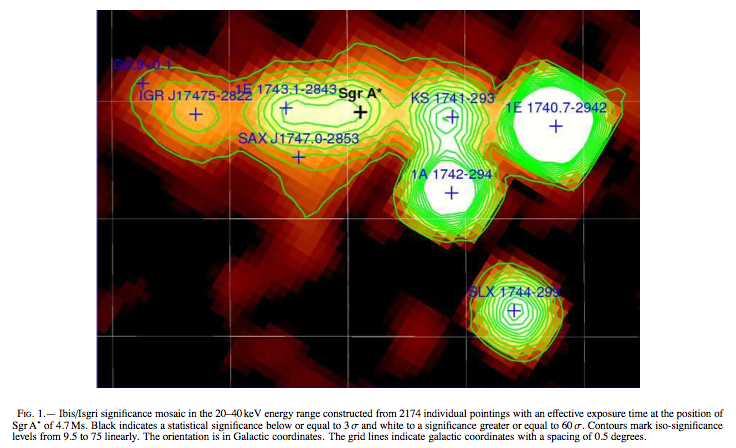
[20-40 keV, by INTEGRAL/IBIS, 2.5 x 1.5 degrees (Belanger et al. 2006, ApJ 636, 275)]
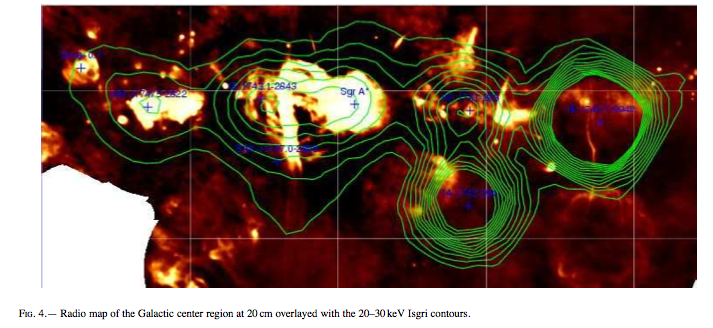
[20-30 keV, by INTEGRAL/IBIS, 2.5 x 1.5 degrees, overlayed with a radio image (Belanger et al. 2006, ApJ 636, 275)]
[20-40 keV, by NuSTAR, 5 x 5 arcmin. The extended, unresolved hard X-ray emission implies a population of accreting white dwarfs and low-mass X-ray binaries. (Perez et al. 2015, Nature 520, 646)]
[511 keV, by INTEGRAL/SPI. What is the origin of those positrons? (Weidenspointner et al. 2008, Nature 451, 159)]
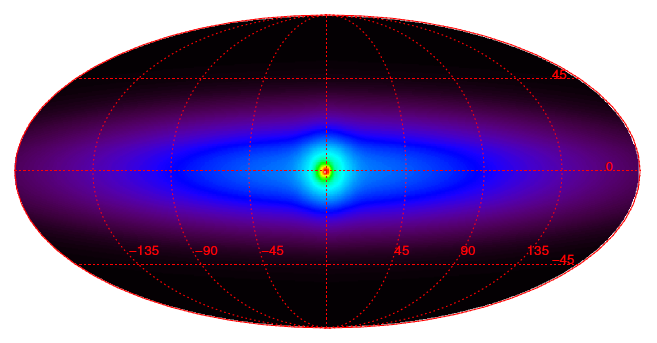
[A model consistent with a more recent result of 511 keV observation by INTEGRAL/SPI. (Siegert et al. 2016, A&A 586, A84)]
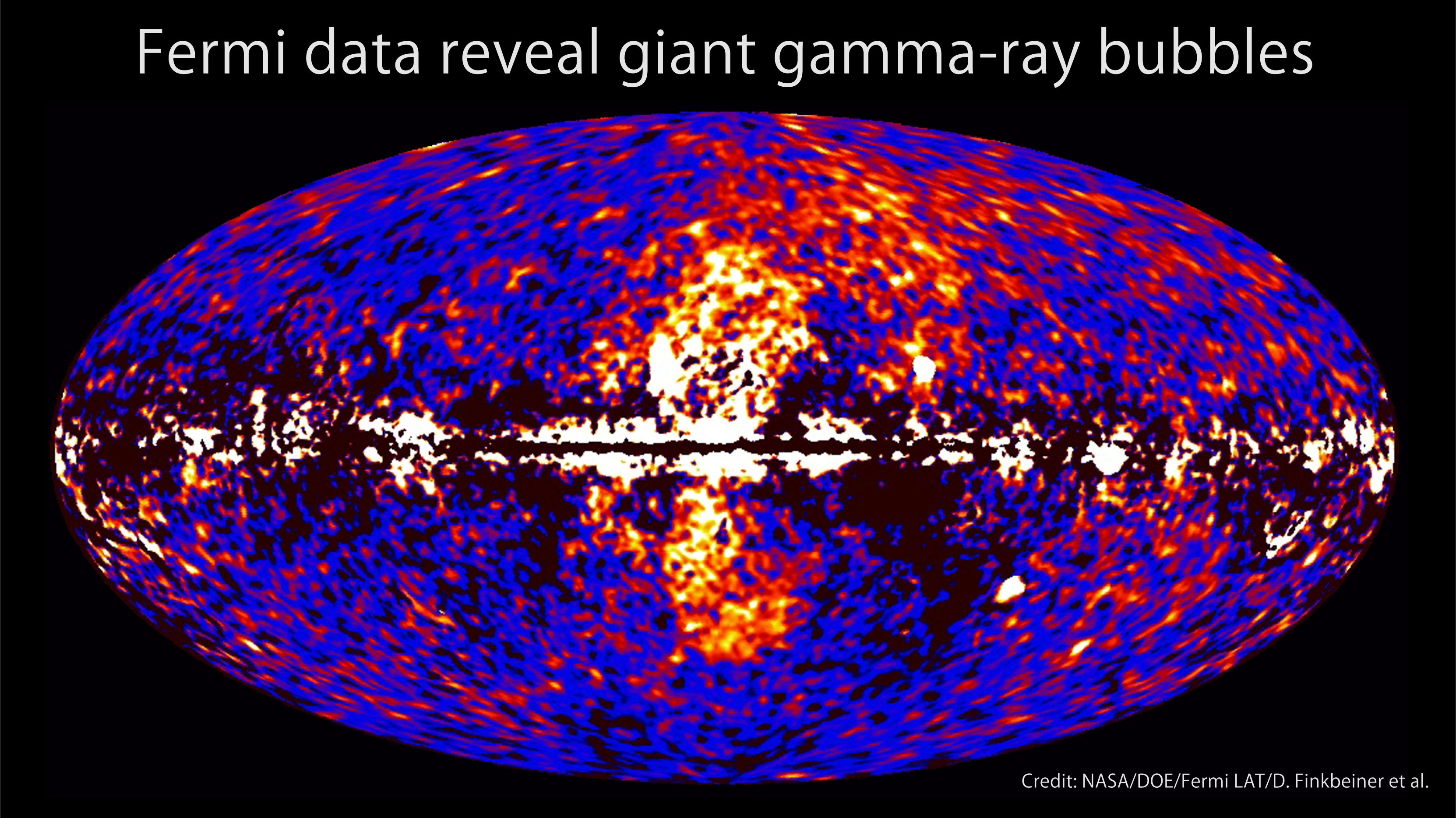
[1-10 GeV, all sky, by Fermi/LAT.]
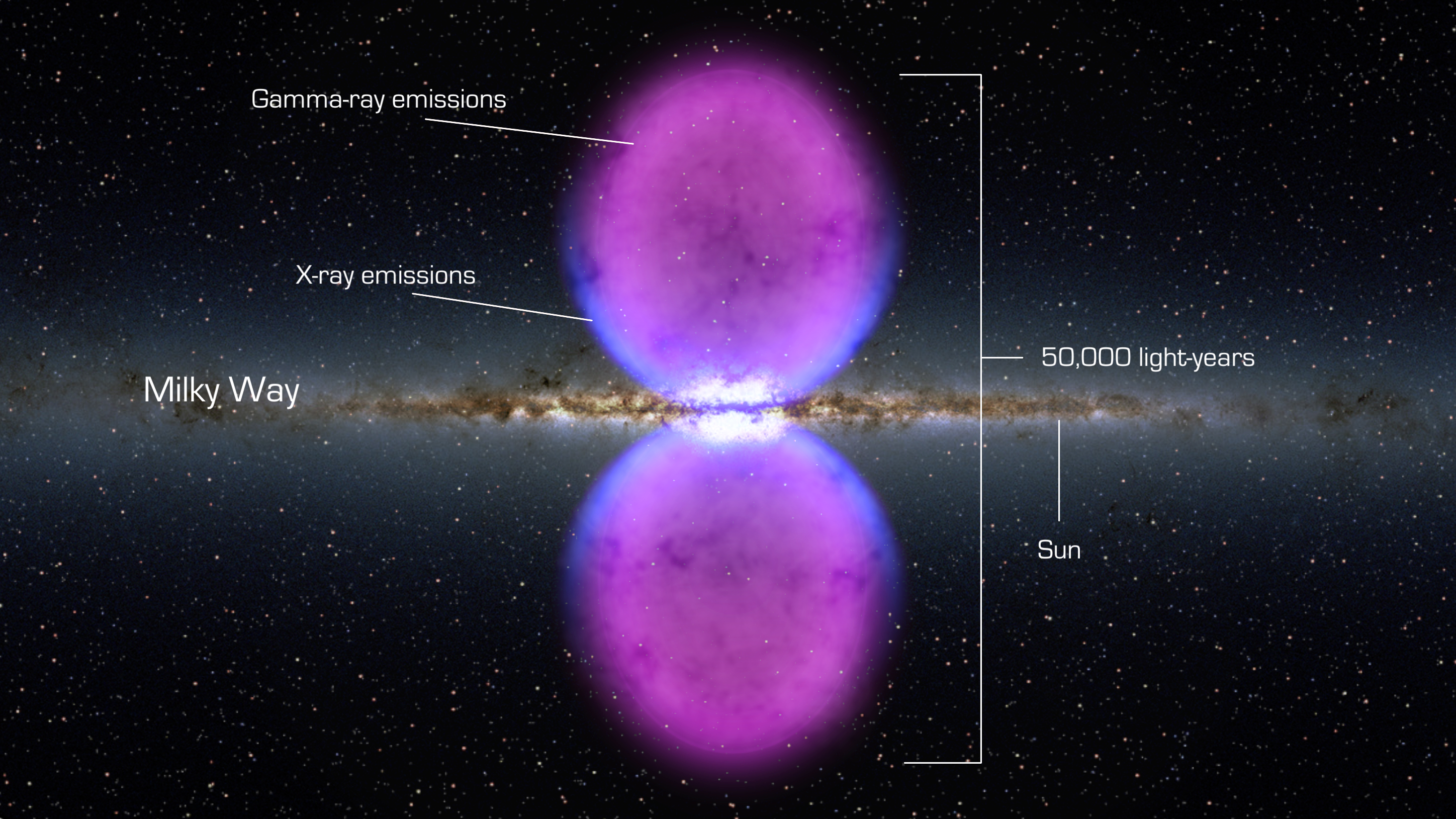
[Fermi Bubble illustration (Credit: NASA/GSFC)]